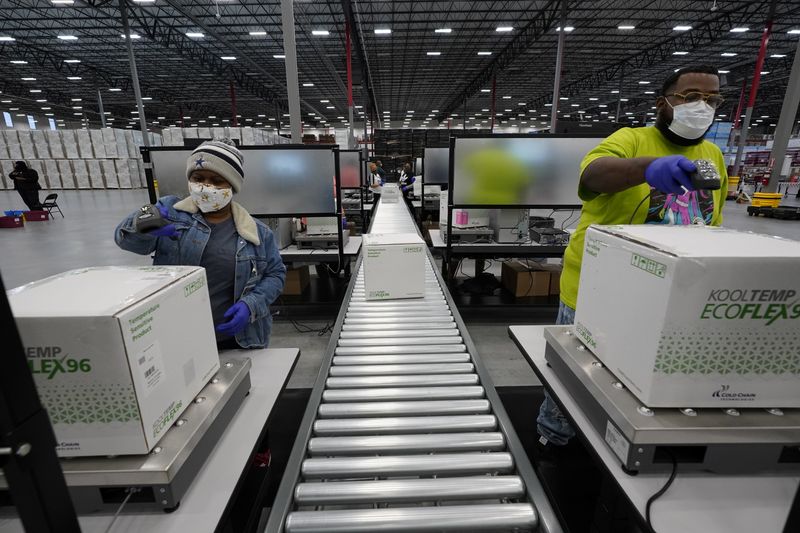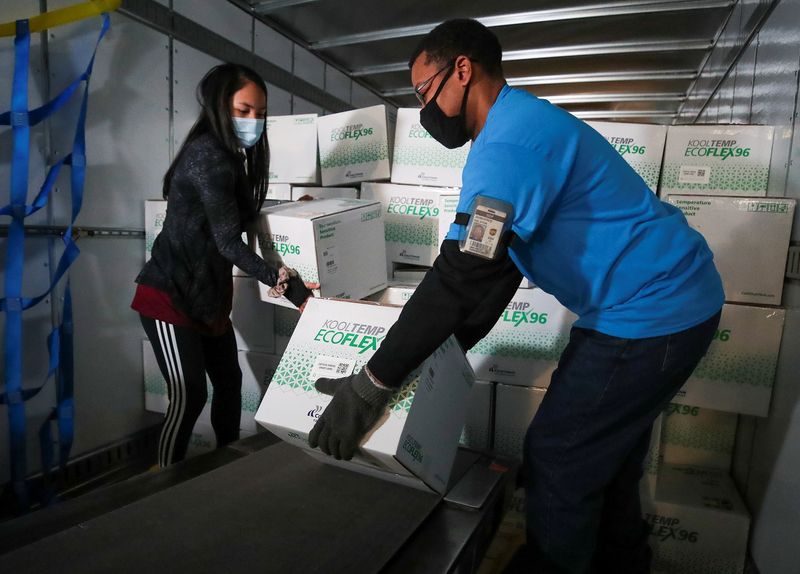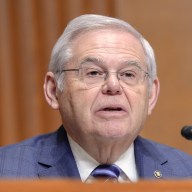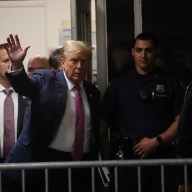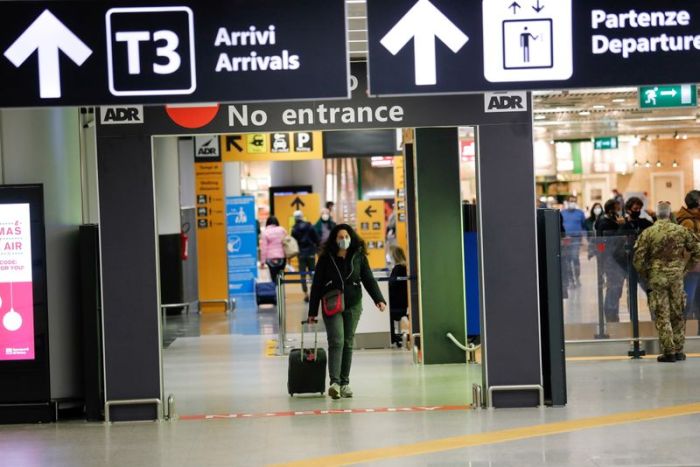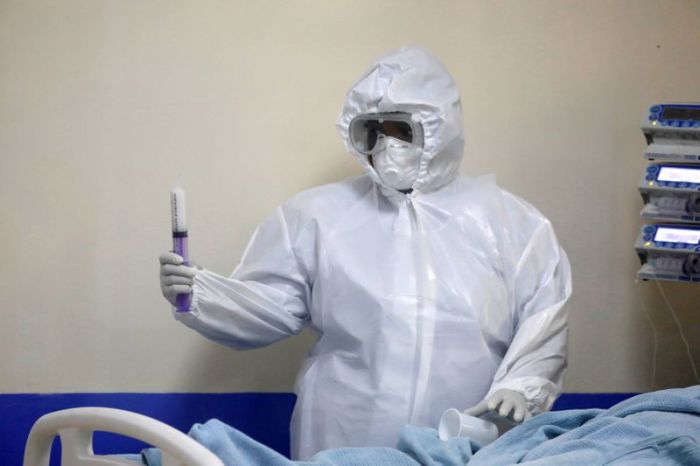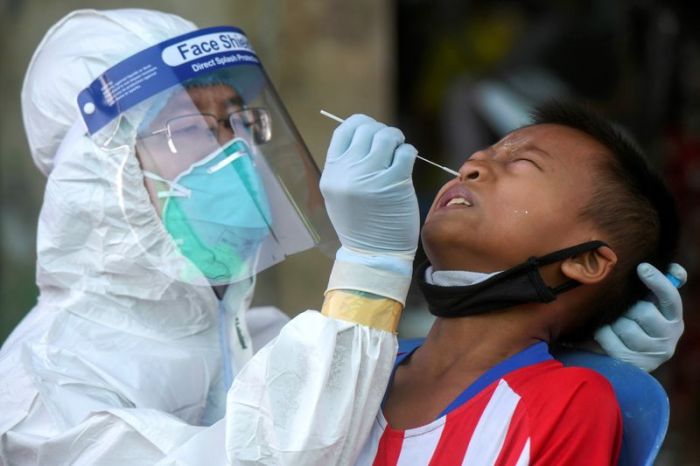(Reuters) – An advisory panel on Sunday recommended U.S. frontline essential workers and people 75 and older should be next in line to get inoculated as the distribution of Moderna Inc’s vaccine, the second approved coronavirus vaccine, began across the country.
The U.S. Centers for Disease Control and Prevention’s (CDC) Advisory Committee on Immunization Practices voted 13 to 1 to recommend 30 million frontline essential workers, which include first responders, teachers, food and agriculture, manufacturing, U.S. Postal Service, public transit, and grocery store workers, have the next priority for the vaccines.
In all, the move would make 51 million people eligible to get inoculated in the next round. It was not immediately clear when the next round would begin.
About 200 million people including non-frontline workers such as those in media, finance, energy and IT and communication industries, persons in the 65-74 age group, and those aged 16-64 years with high-risk conditions should be in the ensuing round, the panel recommended.
States, which are the ones distributing shots to their residents, will use the advisory panel’s guidelines to decide on how to allocate the vaccines while supplies are scarce.
Inoculation against the disease is key to safely reopening large parts of the economy and reducing the risks of illness at crowded meatpacking plants, factories and warehouses. However, confusion has broken out over who exactly is considered essential during a pandemic.
Ahead of the vote, many companies and industry groups had been lobbying to get their U.S. workers in line to receive the vaccines immediately after healthcare professionals and long-term care facility residents.
Meanwhile, trucks of FedEx Corp and United Parcel Service Inc started picking up the doses from warehouses for deliveries to hospitals and other sites.
Vials of Moderna’s vaccine were filled in pharmaceutical services provider Catalent Inc’s facility in Bloomington, Indiana. Distributor McKesson Corp is shipping doses from facilities in places including Louisville, Kentucky, and Memphis, Tennessee – close to air hubs for UPS and FedEx.
Both FedEx and UPS said the shipments were running smoothly and everything was going exactly as planned.
Separately, U.S. health officials are monitoring the new strain of COVID-19 emerging in the United Kingdom, U.S. Surgeon General Jerome Adams said on Sunday, adding that any mutation shows people must keep protecting themselves from the novel coronavirus while awaiting vaccination.
British Prime Minister Boris Johnson and scientists announced on Saturday that the new virus strain had led to spiraling infection numbers, tightening the COVID-19 restrictions for London and nearby areas and disrupting the Christmas holiday plans of millions of people.
The variant, which officials say is up to 70% more transmissible than the original, has prompted concerns about a wider spread. Several European countries, including Belgium, Italy and the Netherlands, said they were taking measures to prevent people arriving from Britain, including bans on flights and trains.
The distribution of Moderna’s vaccine to more than 3,700 locations in the United States will vastly widen the rollout started last week by Pfizer Inc and German partner BioNTech SE.
U.S. COVID-19 vaccine program head Moncef Slaoui said it was most likely the first Moderna vaccine shot, which was approved by the Food and Drug Administration on Friday, would be given on Monday morning.
“We look forward to the vaccine. It’s going to be slightly easier to distribute because it doesn’t require as low (a) temperature as Pfizer,” Slaoui said on CNN.
The U.S. government plans to deliver 5.9 million Moderna shots and 2 million Pfizer shots this week.
Data from CDC shows 2.84 million doses have been distributed and 556,208 shots administered thus far.
The start of delivery for the Moderna vaccine will significantly widen availability of COVID-19 vaccines as U.S. deaths caused by the respiratory disease have reached more than 316,000 in the 11 months since the first documented U.S. cases. (Graphic: https://tmsnrt.rs/34pvUyi)
Some states are choosing to use Moderna’s shots for harder-to-reach rural areas because they can be stored for 30 days in standard-temperature refrigerators. Pfizer’s must be shipped and stored at minus 70 Celsius (minus 94 Fahrenheit) and can be held for only five days at standard refrigerator temperatures.
Initial doses were given to health professionals. Programs by pharmacies Walgreens and CVS to distribute the Pfizer vaccine to long-term care facilities are expected to start on Monday.
(Reporting by Rajesh Kumar Singh in Chicago and Carl O’Donnell in New York; Additional reporting by Idrees Ali in Washington; Editing by Lisa Shumaker, Sonya Hepinstall and Daniel Wallis)

